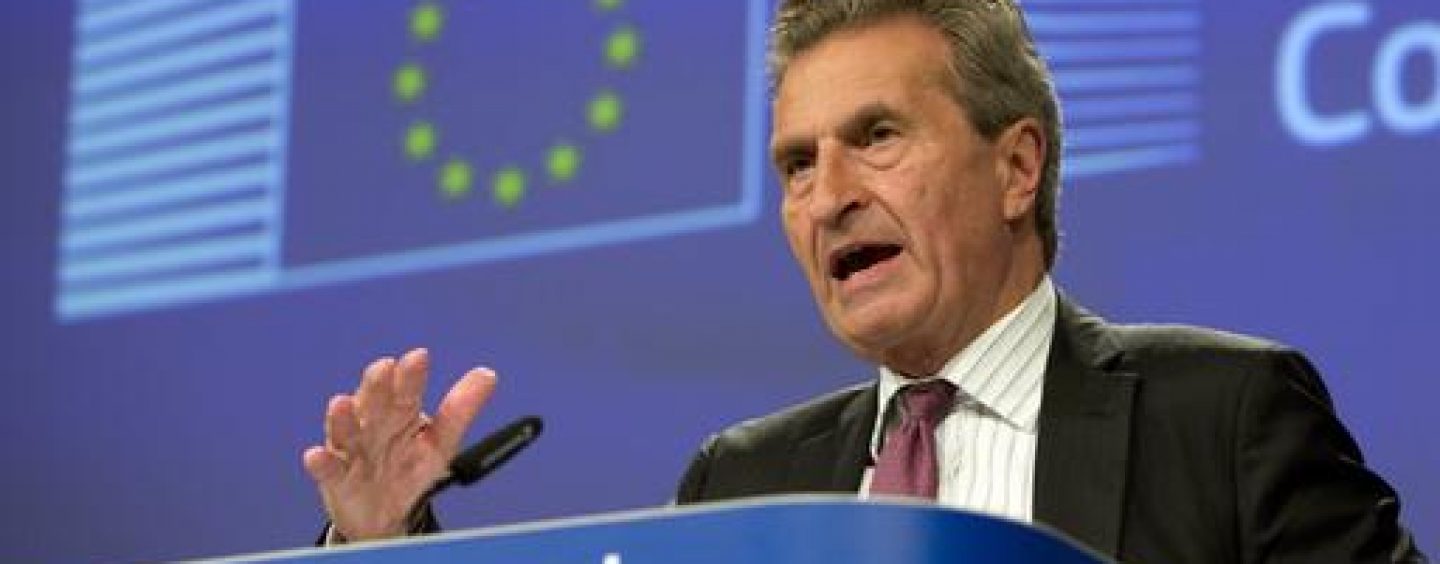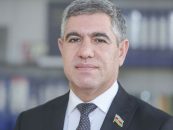By Günther Oettinger, EU Energy Commissioner
Europe is waking from a prolonged recession. Growth is back. Looking forward, we can see that Europe’s prosperity, our competiveness, rests on getting all the elements of a successful economy right. Sufficient, reliable and affordable energy supplies are a major factor among those elements. But as Gazprom CEO Alexei Miller said recently “The European market is skyrocketing: ….by December gas is expected to cost around USD 500 under our long-term contracts. I believe these are not the last record figures for this year.” Input prices for fuels threaten growth.
Yesterday’s oversupplied gas markets are tomorrow’s tight market. There is money in natural gas. But that means that gas, an essential input, will drive up the costs of Standort Europa. For the economy’s sake, we must bring supply competition by getting more pipelines to new suppliers and companies, and we must expand the LNG market.
Moreover, Europe has to achieve its carbon targets. After Fukushima, gas is more attractive, being relatively a low carbon fuel. It complements intermittent renewables — like wind – well. It is plentiful, and there are lots of producer countries. Gas is about to become a fuel of choice.
The shame is that Europe is not connected to as many potential suppliers as it should be, despite most of the producers being within economic range of pipelines or LNG routes. We have three established supply routes with Norway, Russia and Algeria. We will have a growing import market. A comfortable oligopoly of suppliers in Europe is evident. There is evident demand from consumers to have more suppliers, witnessed by the number of consumer-led diversification projects.
This makes us look at the perspective of gas imports from Central Asia and the Middle East. Collectively the region between Kazakhstan and Egypt has much more gas than Russia – by a factor of 1.5. In Central Asia, the worlds 4th largest proved reserve, Turkmenistan, is asking for a solid commercial commitment from our companies, in the purchase and in the extraction of natural gas. Azerbaijan, whose potential is globally significant, is also in view. Behind these stand Kazakhstan and Uzbekistan. The Caspian countries are abundant in gas; they actually burn 9.8 billion cubic metres of natural gas every year – as flares. South of the Caspian, there is Iraq, and the government in Baghdad is looking for a solid partner to develop its domestic market and the export option. Production costs of gas in these countries are globally competitive. Yet, there is no economic export route for this gas to market.
The European Union has launched the Southern Gas Corridor initiative to bring these new producers into the European market. We have active buyers. But we have few active producer companies driving the process.
Over the next 6 months, the European Commission will develop its Southern Corridor strategy and enhance it further. It is looking for upstream investors, from whatever background, who can drive the process to open the Southern Corridor and underwrite the infrastructure to get these sources of supply to market. The Commission supports various pipeline projects linking the Caspian region to Europe. Nabucco, a dedicated gas pipeline from Azerbaijan to the heart of Europe, would have the largest capacity among them. Together with it we also support regional pipeline solutions across the Caspian. We are committed to put in place a generic and welcoming regime for investment in these regions and in the transit routes to Europe. We will accommodate the necessary company co-operation to get the Southern Corridor open. We will make sure that the companies involved have a stable, long-term perspective to enter the EU market.
Europe is not offering subsidy. It is offering a stable long-term market with good prices and the best customers in the world.






